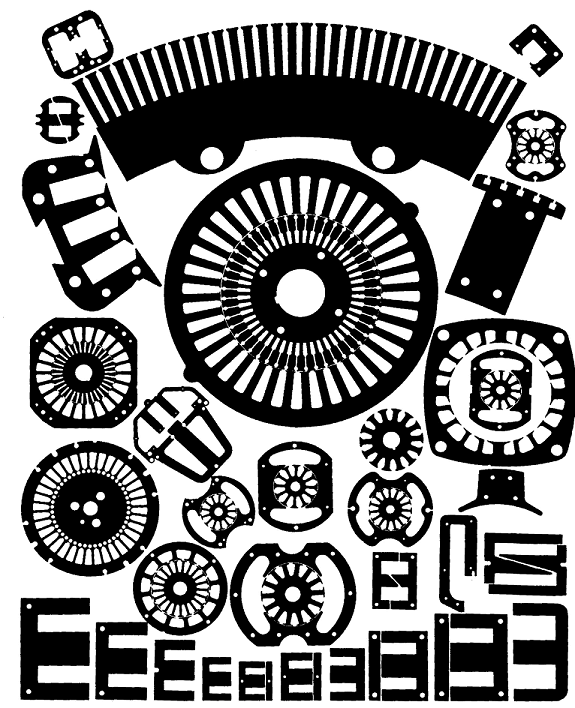| Capacitors, Magnetic Circuits, and Transformers is a free introductory textbook on the physics of capacitors, coils, and transformers. See the editorial for more information.... |

|

Home  Magnetic Circuits Magnetic Circuits  Magnetic Materials Magnetic Materials |
|||||||||||
| See also: Hysteresis Loop | |||||||||||






|
|||||||||||
Magnetic Materials
In the atoms of nonmagnetic materials, the magnetic effect of electron spin in one direction is completely offset by equal electron spin in the opposite direction. Strictly speaking, all materials are magnetic in the sense that they can be magnetized. Materials that have a relative magnetic permeability μr not appreciably greater than unity are considered nonmagnetic. Similarly,
the composite effects of the orbital motions of charges cancel each other and there is no magnetic effect. However, in the case of magnetic materials, more properly called ferromagnetic materials, compensation of electron spin is not complete. As a result, tiny, completely magnetized regions called domains exist in the crystals of such materials. When ferromagnetic materials are in an unmagnetized state, the orientation of the domains is random and the magnetic moment of the whole crystal is zero. When subjected to low values of magnetic field intensity the domains undergo a boundary displacement. As the magnetic field intensity is increased there is a sudden orientation of the domains toward the direction of the applied magnetic field. Further increases in magnetic field intensity are accompanied by a slower orientation of the domains. These three regions are shown in Fig. 3-10.
Magnetic materials form an indispensable part of electric generators, power transformers, audiotransformers, telephone receivers, relays, loud speakers, magnetic recorders, and numerous other devices. Magnetic materials include certain forms of iron and its alloys in combination with cobalt, nickel, aluminum, and tungsten and are known as ferromagnetic materials. Such materials are easy to magnetize and if these were to be replaced by nonmagnetic materials, the size of most electromagnetic apparatus would become prohibitive if it did indeed permit functioning.
The magnetic permeability of ferromagnetic materials is not constant. At low values of flux density the permeability is low and as the flux density increases, the permeability reaches a maximum until magnetic saturation is approached, upon which the permeability falls off with further increases in flux density. This is illustrated by the curves in Figs. 3-11 and 3-12. In addition the permeability is generally different for increasing flux density than for decreasing flux density at the same value of magnetic field intensity, giving rise to a hysteresis loop when the magnetization is carried through a complete cycle. Figure 3-13 shows a hysteresis loop.
Ferrite cores are molded from a mixture of metallic oxide powders and are used in many high-frequency operations. Their physical properties and manufacturing processes are similar to those of ceramic materials; their d-c resistivities, however, are more than 106 times greater than ceramics, a property which makes them particularly suitable for high-frequency applications. Although such materials have relative permeabilities as high as 5,000 their use is somewhat limited because they become saturated at less than one-half the flux densities at which annealed sheet steel saturates.
|
|||||||||||
Home  Magnetic Circuits Magnetic Circuits  Magnetic Materials Magnetic Materials |
|||||||||||
Last Update: 2011-02-16






